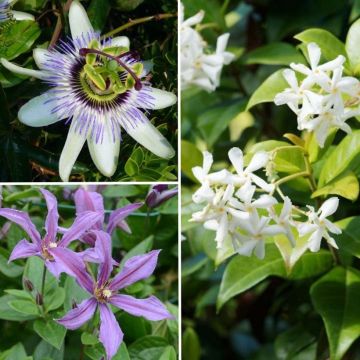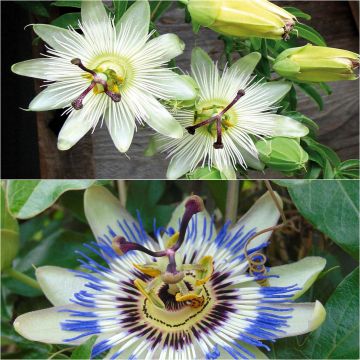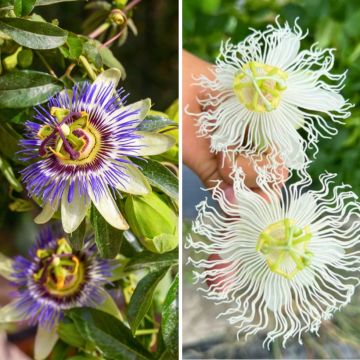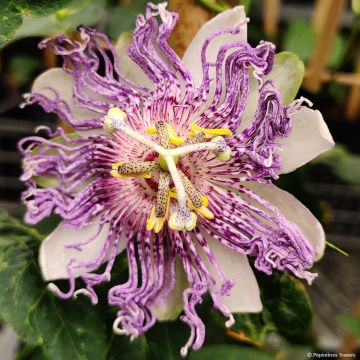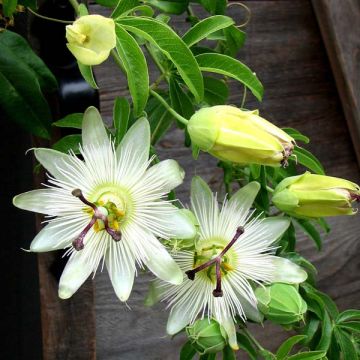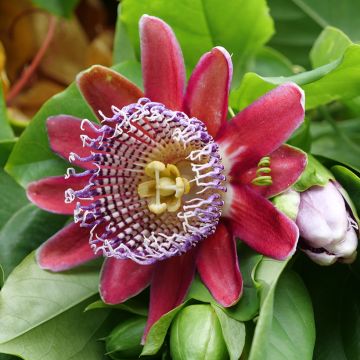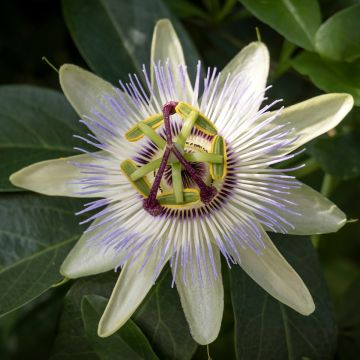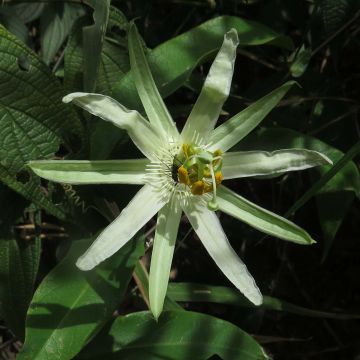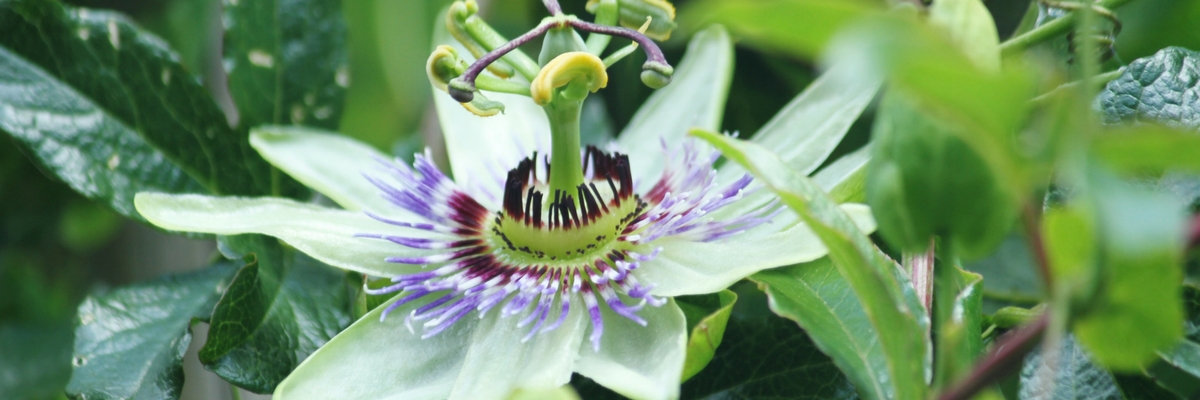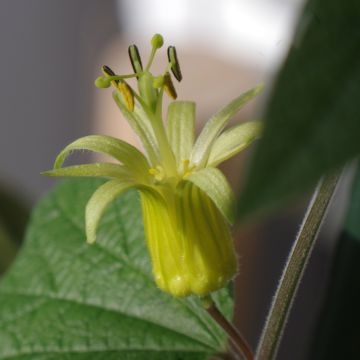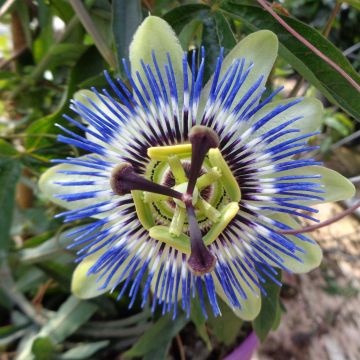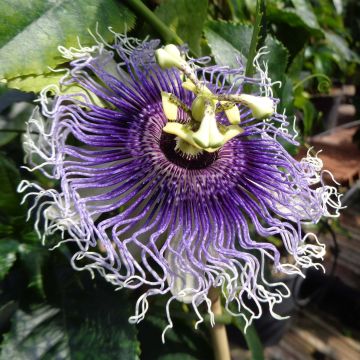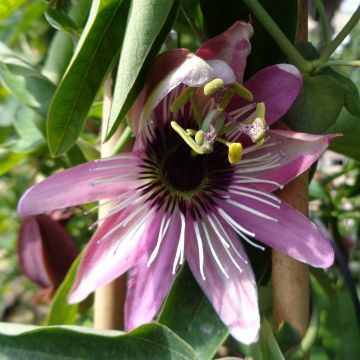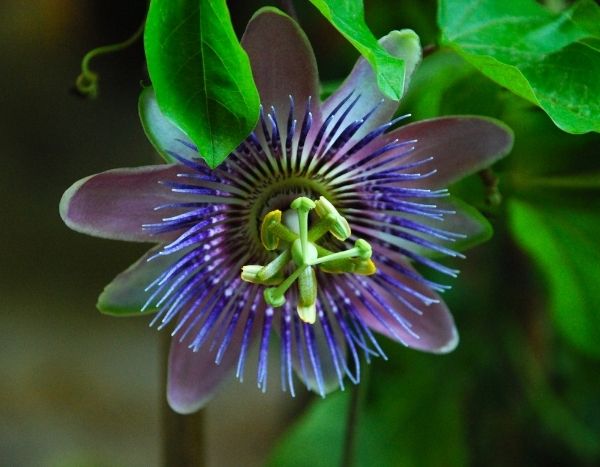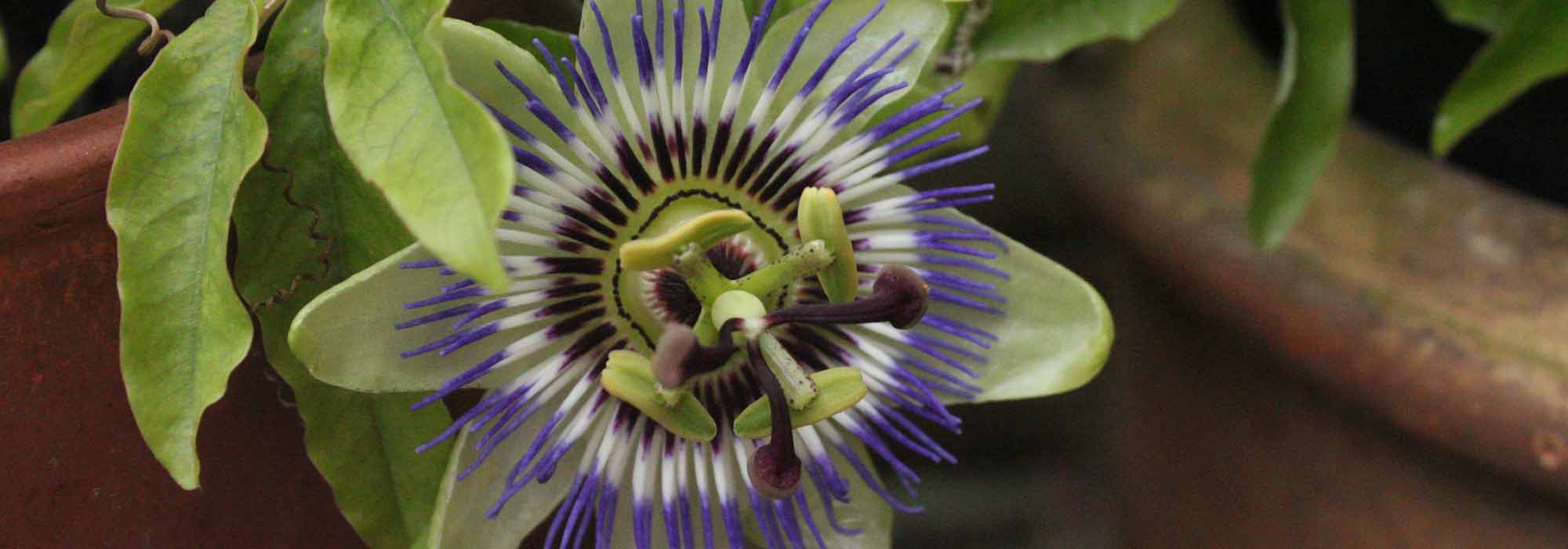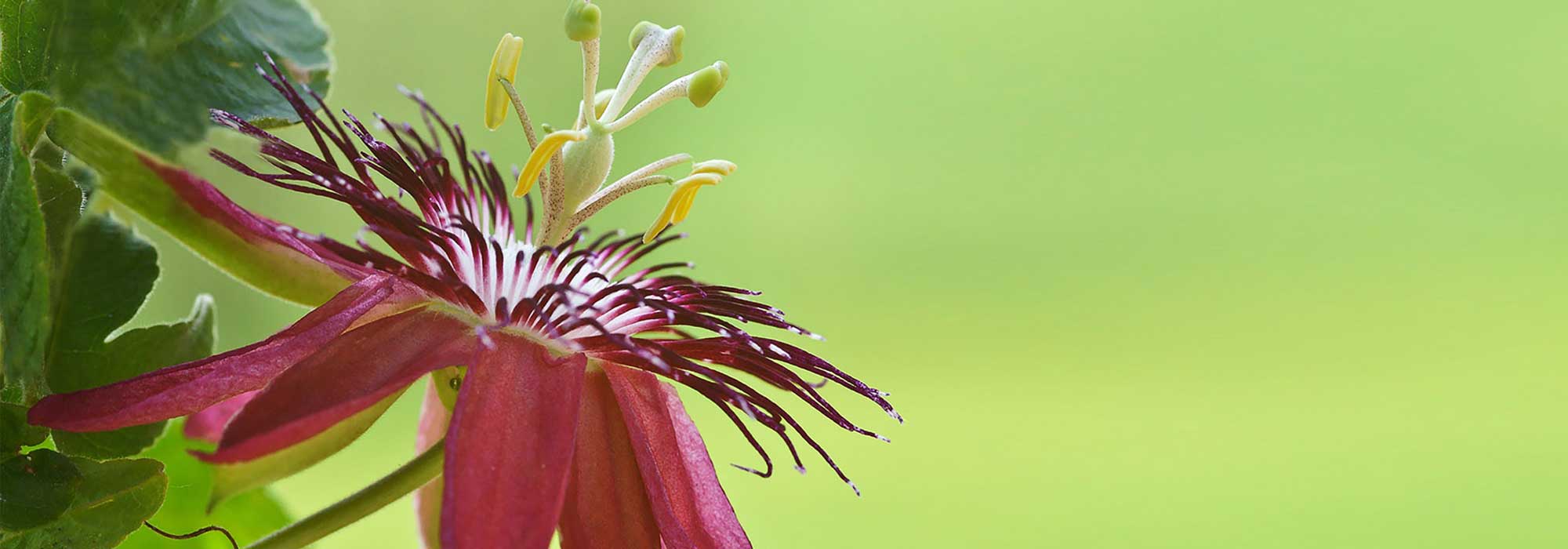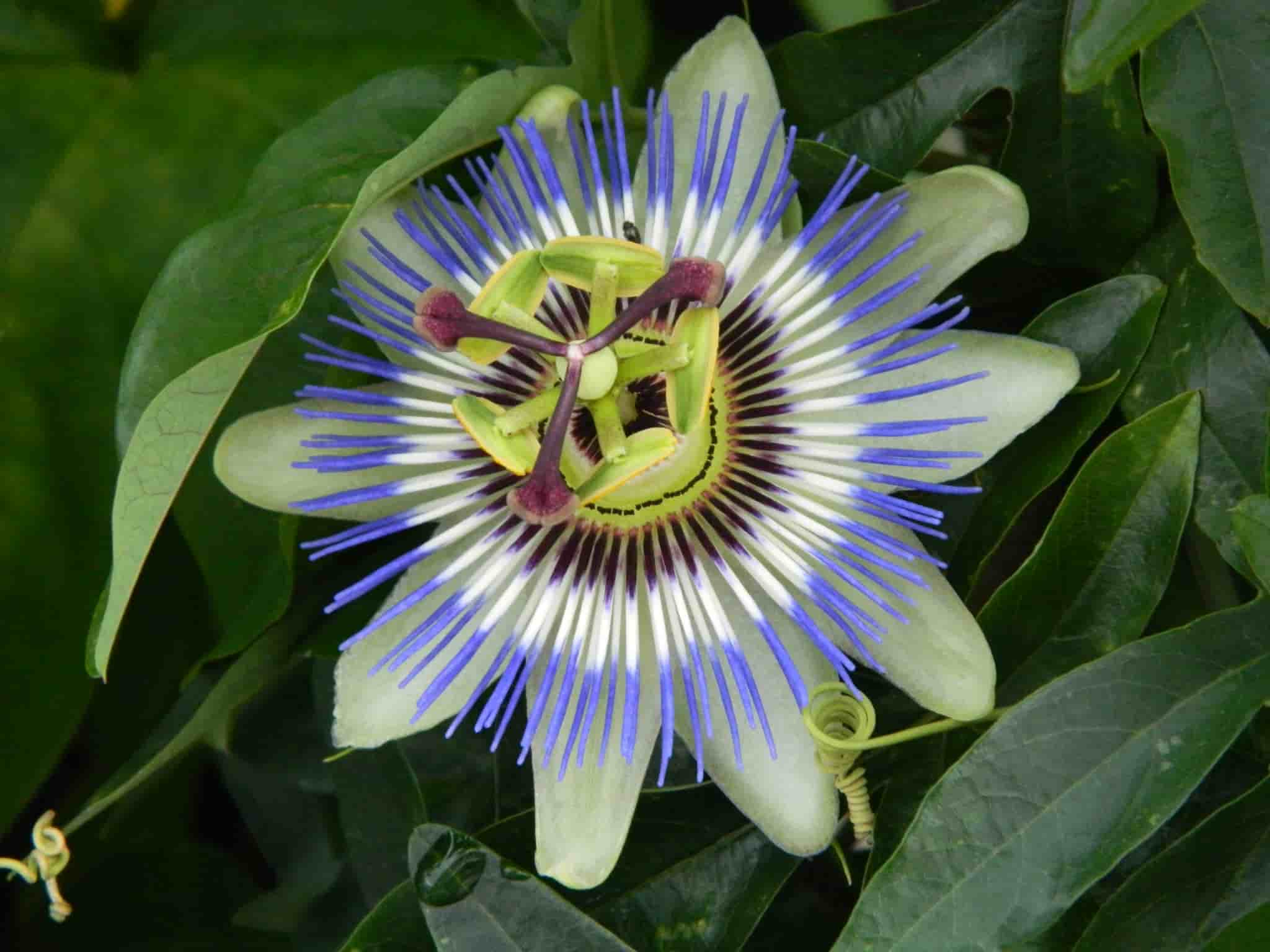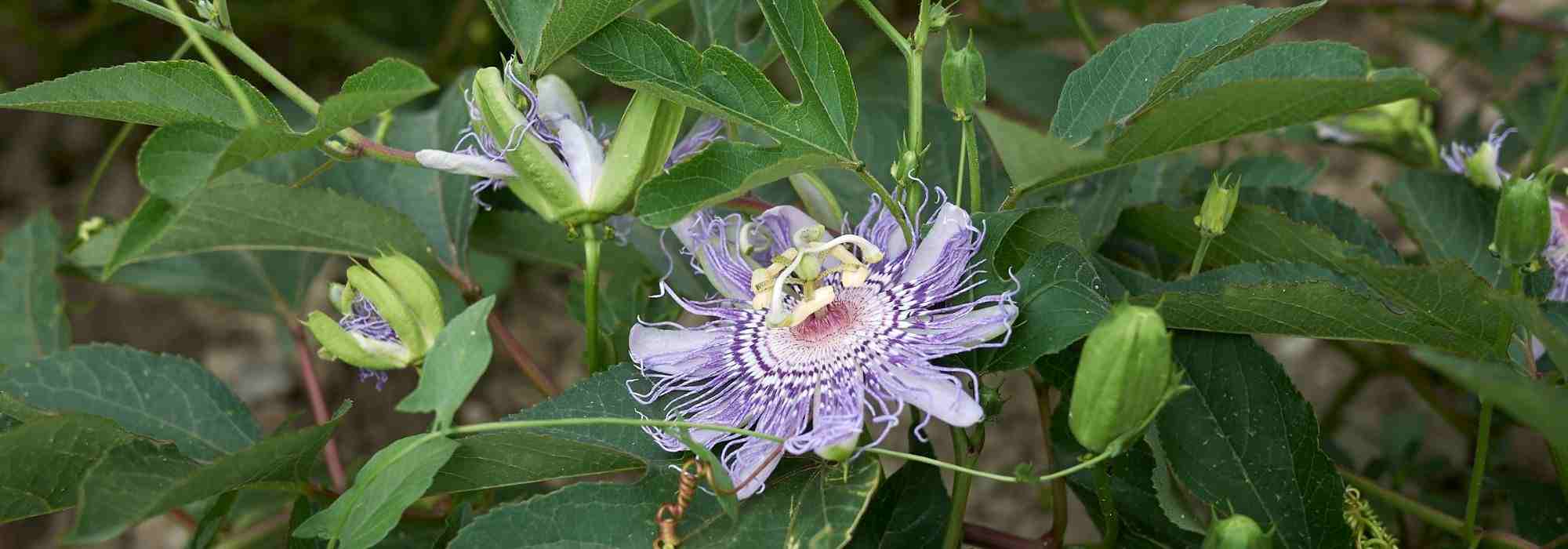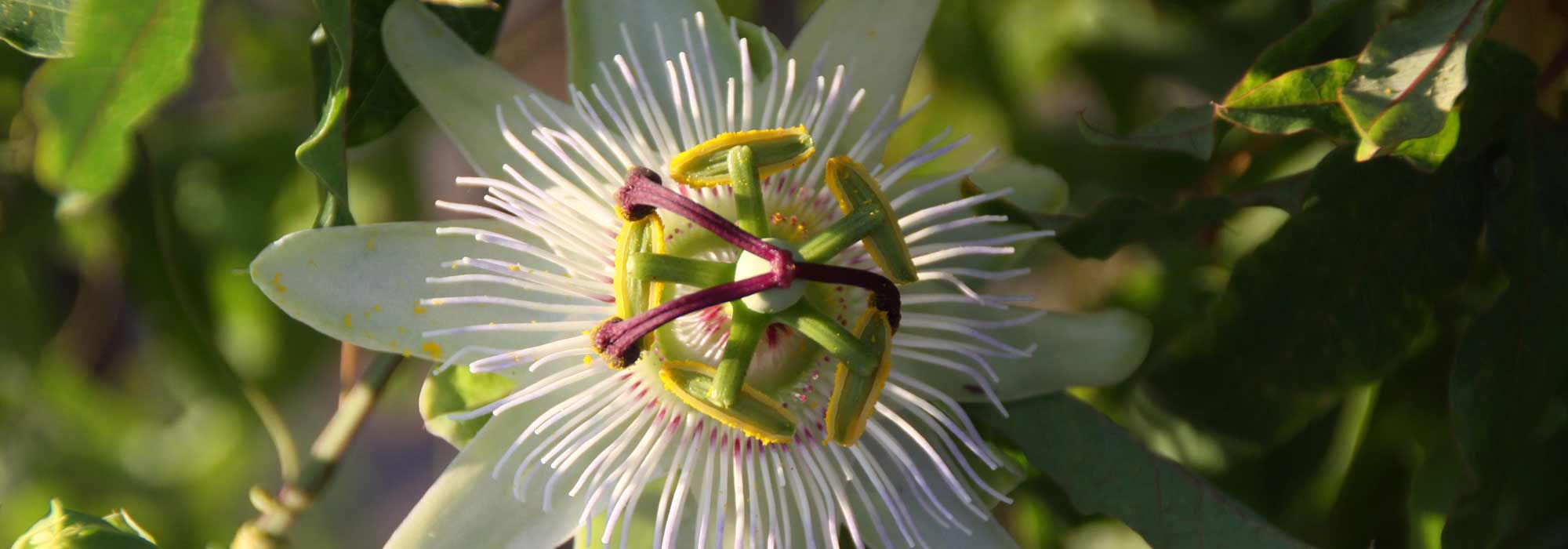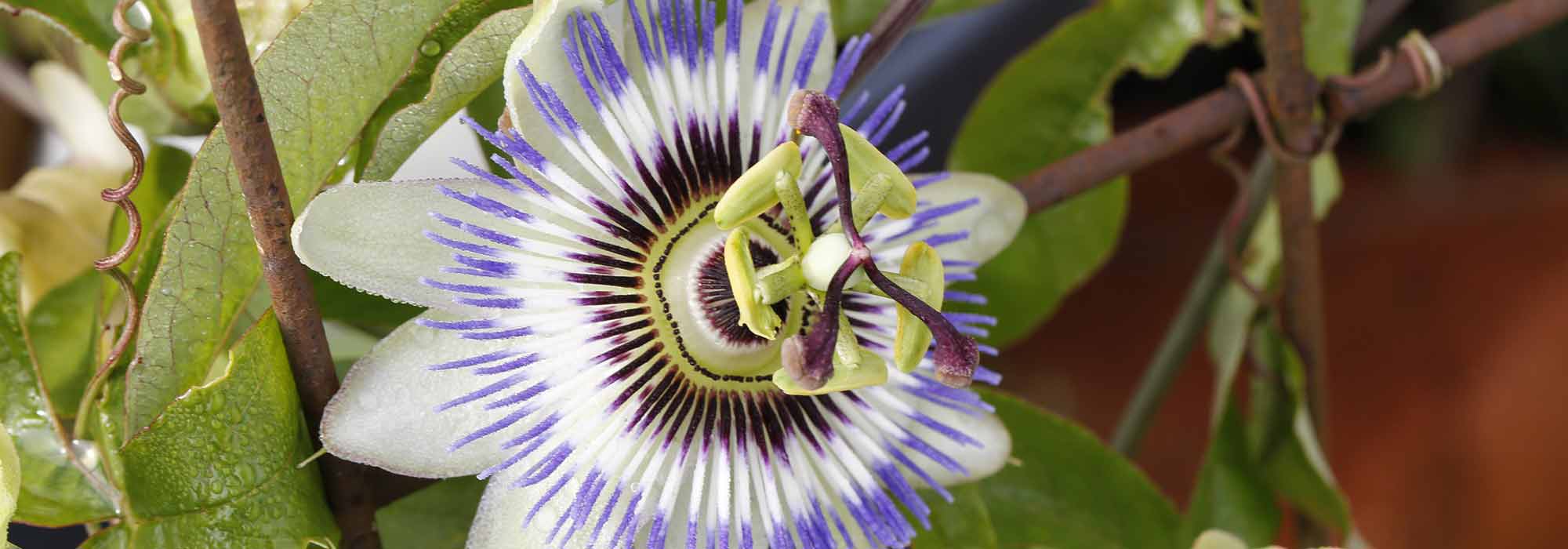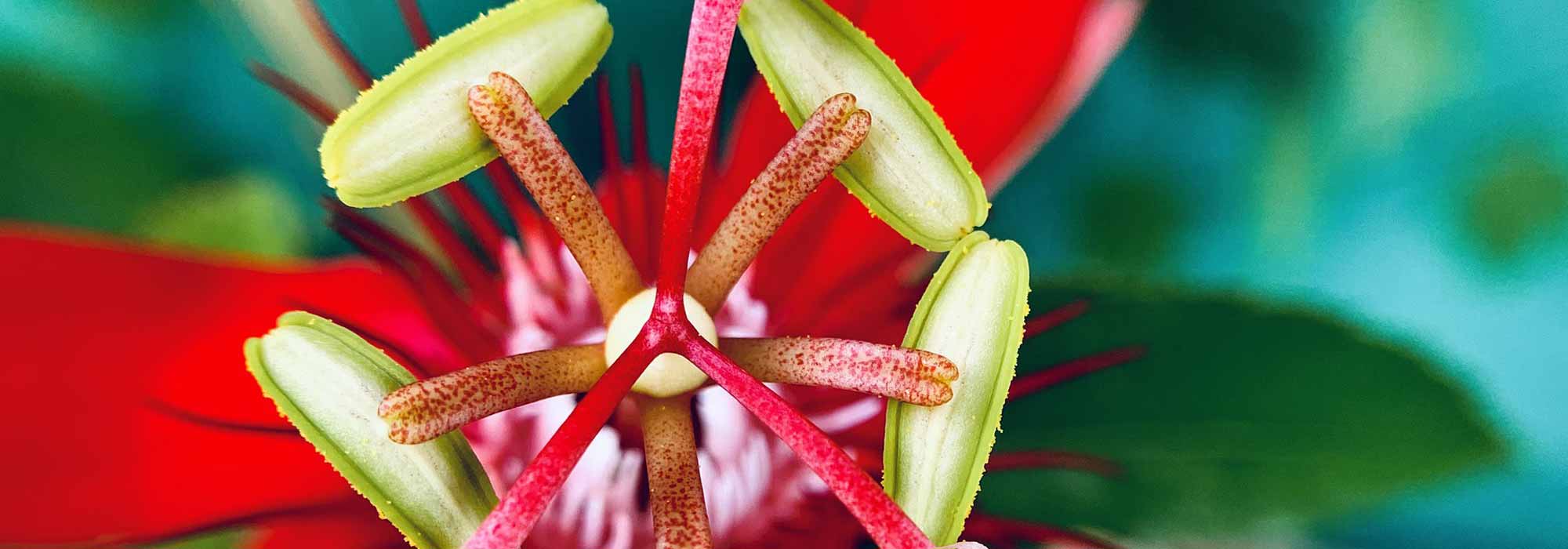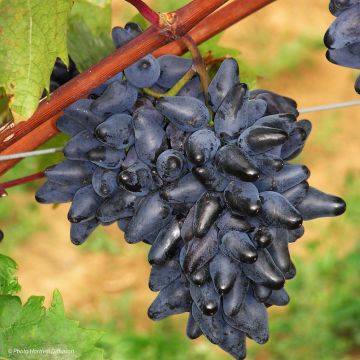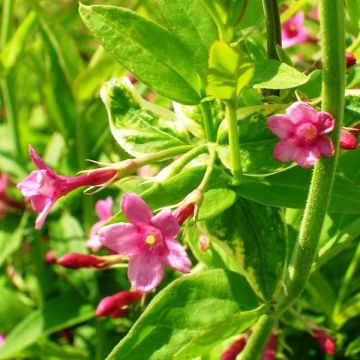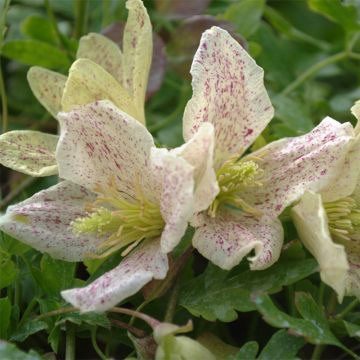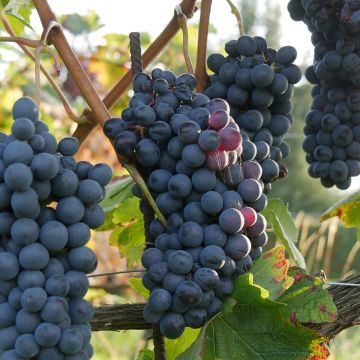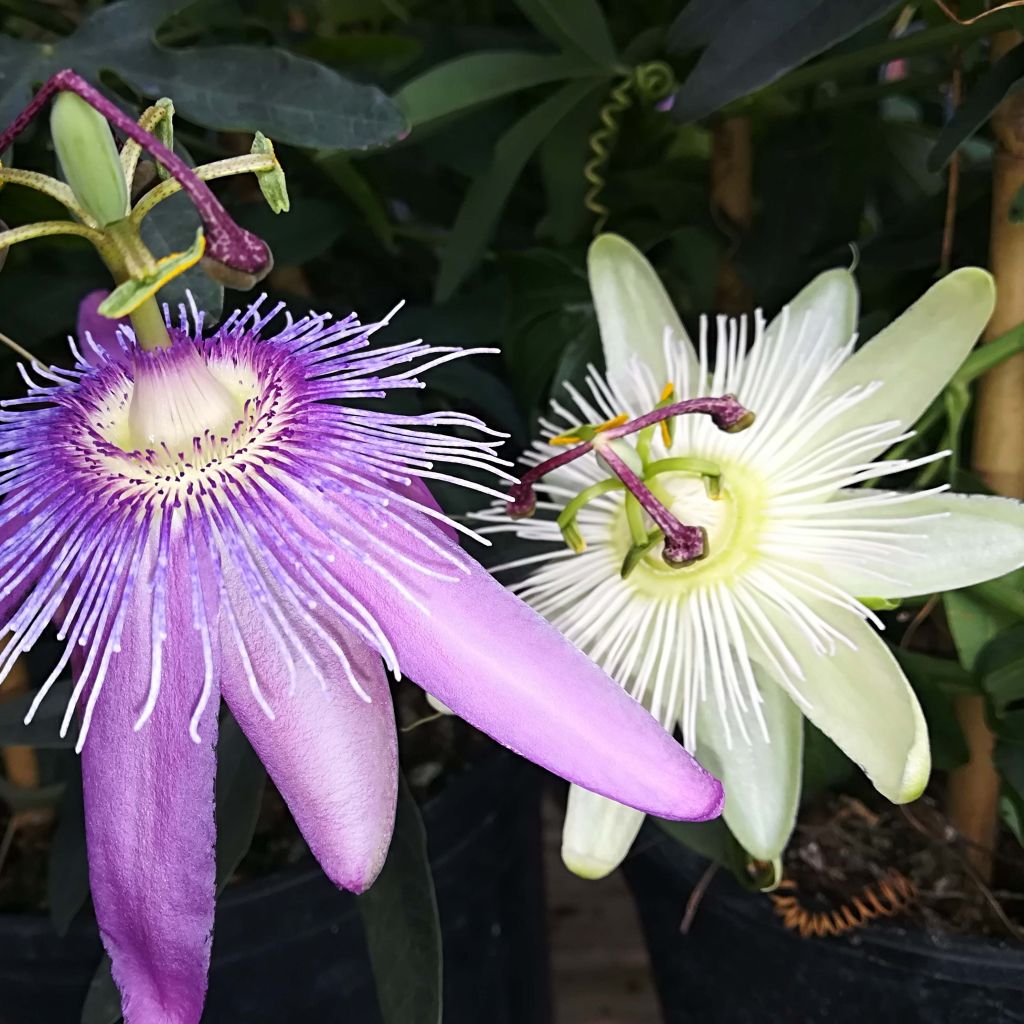

Passiflora Purple Passion and Constance Elliott
Passiflora Purple Passion and Constance Elliott
Passiflora Purple Passion® et Constance Elliott
Passion flower
I have placed this duo in a large slate-coloured plastic container in front of a wall covered in slate. The passionflowers cling to the hooks. The ground is filled with 4 blue bacopas. Very rapid growth. Magnificent result.
Jean Paul, 30/10/2020
Special offer!
Receive a €20 voucher for any order over €90 (excluding delivery costs, credit notes, and plastic-free options)!
1- Add your favorite plants to your cart.
2- Once you have reached €90, confirm your order (you can even choose the delivery date!).
3- As soon as your order is shipped, you will receive an email containing your voucher code, valid for 3 months (90 days).
Your voucher is unique and can only be used once, for any order with a minimum value of €20, excluding delivery costs.
Can be combined with other current offers, non-divisible and non-refundable.
Why not try an alternative variety in stock?
View all →This plant carries a 6 months recovery warranty
More information
We guarantee the quality of our plants for a full growing cycle, and will replace at our expense any plant that fails to recover under normal climatic and planting conditions.
Would this plant suit my garden?
Set up your Plantfit profile →
Description
A colourful duo of passion flowers that bloom from summer until the first frost. These exuberant climbers bear evergreen foliage and produce extraordinary lightly scented flowers. They are a deep purple in ‘Purple Passion’ and ivory-white in 'Constance Elliott'. These vigorous and floriferous varieties will climb up to 4m (13ft) in height. However, they are quite tender, so it is best to grow them in a large pot on a patio or in a conservatory. Bring the pots indoors when temperatures drop below a maximum of -2°C (28.4°F).
This duo consists of 1 Passiflora caerulea 'Constance Elliott' plant and 1 Passiflora 'Purple Passion' plant, both contained in the same pot.
Mostly native to tropical areas of South America, passion flowers belong to the large Passifloraceae family, which includes 400 species and numerous spontaneous or horticultural hybrids.
'Purple Passion' is one of them, bred in the Netherlands and introduced to the market in 2009. This voluble plant clings to its support using tendrils, reaching over 4m (13ft) in height. It is characterised by its quadrangular stems adorned with shiny dark green leaves divided into 5 thick oval lobes. The foliage is evergreen. Its flowering period extends from spring to autumn, with large flowers measuring 6cm (2in) in diameter that constantly renew themselves on the plant. Its slightly fragrant flowers are formed by mauve-purple tepals, with a striped crown in violet, white, and mauve. The stamen cluster is green. The unusual shape of the ephemeral flower evolves: petals and sepals curl up, while the crown of filaments folds and then straightens to avoid self-pollination. Once pollinated, the flowers give way to oval edible fruits, ripening to orange. They measure 5 to 6cm (2in) in length. The pulp is reddish, not very sweet, and not very aromatic.
‘Constance Elliott’, also known as the ‘White Passion Flower’, is an old variety that is still very popular. A little hardier than the caerulea species (-10°C (14°F)), it can remain in the ground during winter, provided it is exposed to the south or west and protected with mulch. From summer until the first frost, it boasts a constellation of ivory-white flowers, which are perfectly elegant against a backdrop of shiny dark green leaves. The heart is tinged with almond green and the violet stamens add the finishing touch to the picture.
Passion flowers grow easily in any well-drained, light, deep soil that is not too dry in summer. They flower generously in the sun in a sheltered location. Pruning, at the end of flowering, involves reducing the branches to maintain a beautiful habit.
Plant habit
Flowering
Foliage
Botanical data
Passiflora
Purple Passion® et Constance Elliott
Passifloraceae
Passion flower
Cultivar or hybrid
Other Passionflowers
View all →Planting and care
They thrive in sunlight and heat, and should be placed in a location sheltered from cold and drying winds. Plant them in ordinary, deep, well-worked and well-drained soil. They are hardy down to -5°C (23°F), so should only be planted in open ground in warm regions. If planted outside, choose a protected area and provide mulch in winter. Place them on a support to hold the weight of the vegetation. Train their branches on the support, as the growth is exuberant.
Pruning before winter is recommended to maintain a reasonable size. Cut back the main branches to facilitate growth. Remove dead or misplaced branches and aerate the plants by pruning excess branches.
Be careful of scale insects and whiteflies, as well as the cucumber mosaic virus. Treat preventively.
Planting period
Intended location
Care
Planting & care advice
-
, onOrder confirmed
Reply from on Promesse de fleurs
Similar products
Haven't found what you were looking for?
Hardiness is the lowest winter temperature a plant can endure without suffering serious damage or even dying. However, hardiness is affected by location (a sheltered area, such as a patio), protection (winter cover) and soil type (hardiness is improved by well-drained soil).

Photo Sharing Terms & Conditions
In order to encourage gardeners to interact and share their experiences, Promesse de fleurs offers various media enabling content to be uploaded onto its Site - in particular via the ‘Photo sharing’ module.
The User agrees to refrain from:
- Posting any content that is illegal, prejudicial, insulting, racist, inciteful to hatred, revisionist, contrary to public decency, that infringes on privacy or on the privacy rights of third parties, in particular the publicity rights of persons and goods, intellectual property rights, or the right to privacy.
- Submitting content on behalf of a third party;
- Impersonate the identity of a third party and/or publish any personal information about a third party;
In general, the User undertakes to refrain from any unethical behaviour.
All Content (in particular text, comments, files, images, photos, videos, creative works, etc.), which may be subject to property or intellectual property rights, image or other private rights, shall remain the property of the User, subject to the limited rights granted by the terms of the licence granted by Promesse de fleurs as stated below. Users are at liberty to publish or not to publish such Content on the Site, notably via the ‘Photo Sharing’ facility, and accept that this Content shall be made public and freely accessible, notably on the Internet.
Users further acknowledge, undertake to have ,and guarantee that they hold all necessary rights and permissions to publish such material on the Site, in particular with regard to the legislation in force pertaining to any privacy, property, intellectual property, image, or contractual rights, or rights of any other nature. By publishing such Content on the Site, Users acknowledge accepting full liability as publishers of the Content within the meaning of the law, and grant Promesse de fleurs, free of charge, an inclusive, worldwide licence for the said Content for the entire duration of its publication, including all reproduction, representation, up/downloading, displaying, performing, transmission, and storage rights.
Users also grant permission for their name to be linked to the Content and accept that this link may not always be made available.
By engaging in posting material, Users consent to their Content becoming automatically accessible on the Internet, in particular on other sites and/or blogs and/or web pages of the Promesse de fleurs site, including in particular social pages and the Promesse de fleurs catalogue.
Users may secure the removal of entrusted content free of charge by issuing a simple request via our contact form.
The flowering period indicated on our website applies to countries and regions located in USDA zone 8 (France, the United Kingdom, Ireland, the Netherlands, etc.)
It will vary according to where you live:
- In zones 9 to 10 (Italy, Spain, Greece, etc.), flowering will occur about 2 to 4 weeks earlier.
- In zones 6 to 7 (Germany, Poland, Slovenia, and lower mountainous regions), flowering will be delayed by 2 to 3 weeks.
- In zone 5 (Central Europe, Scandinavia), blooming will be delayed by 3 to 5 weeks.
In temperate climates, pruning of spring-flowering shrubs (forsythia, spireas, etc.) should be done just after flowering.
Pruning of summer-flowering shrubs (Indian Lilac, Perovskia, etc.) can be done in winter or spring.
In cold regions as well as with frost-sensitive plants, avoid pruning too early when severe frosts may still occur.
The planting period indicated on our website applies to countries and regions located in USDA zone 8 (France, United Kingdom, Ireland, Netherlands).
It will vary according to where you live:
- In Mediterranean zones (Marseille, Madrid, Milan, etc.), autumn and winter are the best planting periods.
- In continental zones (Strasbourg, Munich, Vienna, etc.), delay planting by 2 to 3 weeks in spring and bring it forward by 2 to 4 weeks in autumn.
- In mountainous regions (the Alps, Pyrenees, Carpathians, etc.), it is best to plant in late spring (May-June) or late summer (August-September).
The harvesting period indicated on our website applies to countries and regions in USDA zone 8 (France, England, Ireland, the Netherlands).
In colder areas (Scandinavia, Poland, Austria...) fruit and vegetable harvests are likely to be delayed by 3-4 weeks.
In warmer areas (Italy, Spain, Greece, etc.), harvesting will probably take place earlier, depending on weather conditions.
The sowing periods indicated on our website apply to countries and regions within USDA Zone 8 (France, UK, Ireland, Netherlands).
In colder areas (Scandinavia, Poland, Austria...), delay any outdoor sowing by 3-4 weeks, or sow under glass.
In warmer climes (Italy, Spain, Greece, etc.), bring outdoor sowing forward by a few weeks.






























